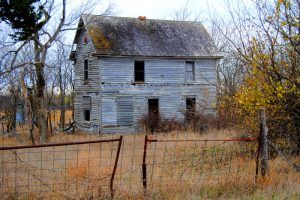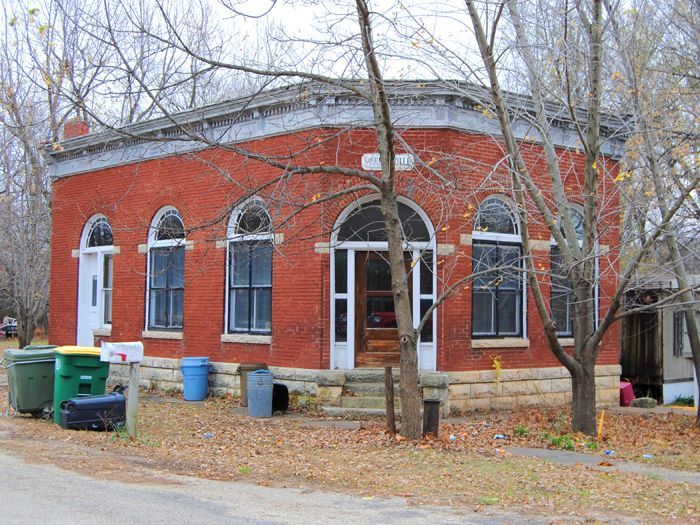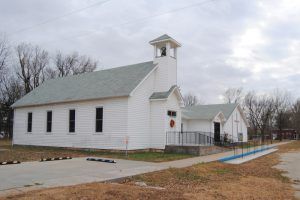Parkerville, Kansas, is a semi-ghost town located on the Neosho River about 12 miles northwest of Council Grove. Located along the old Santa Fe Trail, it wasn’t founded during the days of wagon train travel but instead after the Missouri-Kansas-Texas Railroad came through the area.
Parkerville was established by Charles G. Parker, a former Santa Fe Trail wagon train freighter, in 1870. Parker laid out the settlement surrounding a town square, as he planned to remove the county seat status from Council Grove, and the square would be used for a new courthouse. Eastman and Thomas established the first store, and Charles Parker established the first residence. J.A. Wallace ran a drug store/post office. A post office was established in August 1870 and called Parkersville for its founder. By the end of the year, the town also boasted about 19 homes and a boarding house.
The next year, the town was incorporated in February, and in the spring, an election was held for town officers, at which time, J. A. Wallace was chosen mayor. Almost immediately, Parkerville challenged Council Grove for the County Seat. An election was called to settle the matter. All sorts of trickery were resorted to by both sides, including bringing in men by the hundreds for voting purposes. At that time, the population of the county was 2,225. The number of votes cast was 1,312, of which 899 were for Council Grove and 413 for Parkerville. The same year, the town built a two-story schoolhouse.
In 1873, Charles Parker built the two-and-a-half-story steam-powered Neosho River Mill, which could mill 120 barrels of flour each day.
In October 1877, the Morris County Enterprise, a weekly newspaper, was established by V.C. Welch and quickly had a circulation of about 500. In 1880 a handsome stone Methodist Episcopal Church was built to serve 60 parishioners.
The town thrived in its first decade, and by 1883, it boasted a dry goods store, two drug stores, two grocery stores, a hardware store, two harness shops, and a wagon shop. There were also two cheese factories, a steam grist mill, and a sawmill. However, in the early 1880s, the Missouri Pacific Railroad built a line through the county, which soon created the new settlements of Wesley and Herington, which took trade away from Parkerville.
However, the town continued to prosper through the turn of the century. It had a grade school, high school, bank, newspaper, law offices, a veterinarian, a grocery store, and other businesses by that time. A nearby horse track drew spectators from a large area. In 1910, it had a population of 157.
The town suffered through the Great Depression, and the bank closed in 1931. The Parkerville High School closed in 1945, and the students then attended the White City High School. The grade school, however, continued to hold classes until 1966.
In 1950, the last train went through the town, and within a decade, all signs of the railroad were gone, including the tracks. The town’s post office closed on October 31, 1953.
Today, Parkerville is a sleepy semi-ghost town with only the Baptist Church still open. It has just about 45 residents. The town is located about 18 miles northwest of Council Grove.
©Kathy Alexander/Legends of Kansas, updated December 2021.
Also See:
Kansas Ghost Towns Photo Gallery
Sources:
Blackmar, Frank W.; Kansas Cyclopedia, Standard Publishing, 1912
Cutler, William G.; History of the State of Kansas, A. T. Andreas, 1883
Kansas Towns




